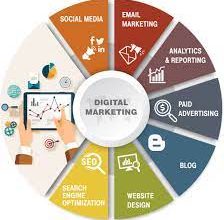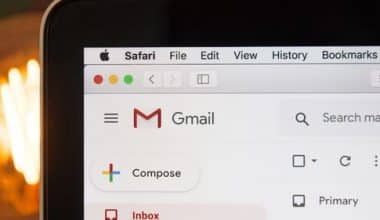Whether we prefer to acknowledge it or not, our upbringing, habits, and emotions all have a significant impact on our behavior. A ton of individuals have daily habits that force them to do the same thing every day. If you drink coffee, for example, you are familiar with the impulse and daily requirements of that morning routine. As a marketer, you want to know who your figurative everyday drinkers are and distinguish them from those who drink less frequently. Behavioral segmentation is more than just acknowledging that people have varied habits; it is also about tailoring marketing efforts to match these behavioral patterns with a specific message. In this post, we will go over the fundamentals of behavioral segmentation and examples of how it is used in marketing to achieve business objectives. We will also go over examples and recommendations for using behavioral segmentation in mobile marketing and eCommerce.
What does Behavioral Segmentation Mean?
Behavioral segmentation is the process of categorizing and classifying clients based on their behaviors. These behaviors include the items and material people consume, as well as the frequency with which consumers connect with an app, website, or business.
Marketers often tread a fine line between psychology and business. They frequently bring their marketing beliefs about how people will react to a marketing campaign. Behavioral segmentation is the monitoring of each customer’s actions so that marketers can offer personalized messaging to them when marketing.
What Is the Importance of Behavioral Segmentation in Marketing?
Once users have been identified based on their individual behavior, mobile marketers can adapt messaging and campaigns to these audiences. Among the advantages of behavioral segmentation are:
Personalization: Behavioral segmentation tells you more than just what product or service a specific group of clients like. It enables you to discover which channels they use and what type of messaging they respond to, allowing you to increase conversions.
Budget allocation: Now that you know which segments spend the most and how they spend, you can better target them with your efforts.
Forecasting: By analyzing the patterns of each segment, you may discover trends and plan for the future more efficiently.
Types of Behavioral Segmentation with Practical Examples
There are four types of behavioral segmentation that can be used to create a complete buyer profile throughout their sales cycle. Each nuance provides actionable insights that can be placed in a variety of marketing channels to encourage customers to follow through on their purchase decisions.
These can be divided into four major behavioral categories.
#1. Purchase and Usage Behavior-Based Segmentation
Purchase behavior segmentation separates the various trends and behavior patterns that customers exhibit when making a purchase choice.
This type of behavioral segmentation provides information about your customer’s buying stage, their role in the purchasing process, the hurdles they face, the incentives they are most likely to respond to, and much more.
Consumers who want to conduct research, for example, may frequently turn to search engines or reviews to ensure they are making the proper decision when purchasing from you, whilst customers who are especially frugal may only interact with your brand or product when it is on sale.
Finally, each of these consumer groups can be classified as having the same product affinity. Targeting all of them with the same marketing materials and messaging, on the other hand, is a waste of resources. The conscientious customer indicated above may not respond to discount offerings in the same way as the thrifty consumer.
This is where purchasing behavior segmentation comes in. These behaviors can be classified into categories based on:
How many encounters does a consumer need with your company before converting; What search terms a customer used to find your brand, product, or service; what questions a customer asks when utilizing a live chat or virtual assistant; and so on.
Knowing this information enables you to respond to your customers’ demands in an appropriate manner.
Customers in the research phase, for example, who are likely to leave to compare prices, could be retargeted with a “best price” or “price match” assurance. Alternatively, a consumer who values social proof and purchases based on popular trends could be targeted with a message indicating that the item is in high demand and moving quickly.
#2. Occasion or Time-Based Segmentation
Occassion-based segmentation classifies clients who are more likely to interact with your brand or make a purchase from your website on specified occasions or at specific times.
National holidays such as Labor Day, holiday seasons such as Thanksgiving or Christmas, or personal events such as a wedding, new home, or vacation are all examples of occasions.
Event-based purchasing might occur in a customer’s daily routine as well. Purchases such as a happy hour round of drinks after work and a caffeinated morning beverage are examples of event-based purchases because they are only made at specific times.
This type of segmentation entails tracking a customer’s purchasing behavior to build a pattern so that you can anticipate the targeting process.
For example, if your store has customers who participate in your Thanksgiving promotions every year but do not buy anything else from you the rest of the year, you can use this information to market to them weeks ahead of time.
#3. Benefits Sought Segmentation
Segmenting by benefits sought means dividing your audience depending on the distinct value proposition that your consumer expects from your product or service.
Let us go over this further. When we make purchases, we do it with the expectation of receiving a specific amount of value or benefit from the products or services.
Even when buying something as harmless as toothpaste, consumers gravitate toward diverse value propositions: Some may be searching for teeth whitening benefits, while others may be looking for relief from sore gums. The benefits of segmentation are embodied by dividing consumers based on these variables.
Furthermore, grouping your data by benefits sought allows you to zero in on the intricacies of what motivates client purchases, exposing the product feature or service component they are most sensitive to. When utilizing this type of behavioral segmentation, divide data by these benefit categories:
- Quality: What distinguishes your goods from the competition?
- Usage: How will your consumer profit from it when they use it?
- Customer Feedback: Are your consumers satisfied with your product or service, or do they have suggestions for improvement?
- USPs: What distinguishes your product from others presently on the market?
- Additional Advantages: Are there any additional benefits that a customer could gain by acquiring your products or services?
#4. Customer Loyalty-Based Segmentation
Loyalty-based segmentation assesses a customer’s level of loyalty to your brand, whether through a rewards program, the number of transactions made, or overall participation with your marketing activities.
Using loyalty-based behavioral segmentation allows you to focus on existing repeat consumers, their demands, behavior patterns, and other factors. Aside from producing recurrent sales for your company, loyal consumers are extremely beneficial in terms of recommendations, word of mouth, and feedback.
Obtaining useful information from this sector can help you optimize future advertising, increase your value offer, boost positioning, and more. Consider the following identifying factors:
What were the key behaviors that cultivated loyalty throughout the customer journey; which customers are the most appropriate or ideal type for loyalty programs; what aspects are most important in keeping those segments of customers pleased; and how are value received from loyal customers maximized?
The airline industry, which routinely advertises frequent flier programs, and the financial industry, which offers rewards for high-spending platinum credit card users, are two of the most typical examples of customer loyalty segmentation.
Examples of eCommerce/Marketing Behavioral Segmentation
When utilized correctly, behavioral segmentation can create amazing results, converting previously cold leads or customers into freshly engaged ones. Here are some real-world instances or examples of behavioral segmentation at its most nuanced and effective.
#1. Usage behavior: BabyCentre UK
BabyCentre UK is a pregnancy and childcare resource in the United Kingdom that is part of the Johnson & Johnson multinational enterprise. The startup uses the Facebook Messenger app to provide personalized advice and targeted recommendations depending on the user’s input via a series of questions and replies.
#2. Chatbot Case Study – BabyCenter
With advertising photos, for example, when a parent selects weaning as the problem, the BabyCentre app engages the user by providing a list of indications to look out for as well as recipes for when the child is ready for solid food.
This customized experience provides BabyCentre with actionable data that it may use to segment the user based on the information gained from their choices: For instance, their child is in the age group that goes through weaning. This data can be used to target customers with repetitive, relevant content, such as recipe instructions or other useful suggestions.
When Babycentre researched what brought the most traffic to their website – with the chatbot or email marketing – it discovered that the messenger bot had an 84 percent read rate and a 53 percent click-through rate (CTR). The figures added up to an overall engagement rate that was 1,428 percent greater than its email funnel, demonstrating how successful segmentation can be when properly classified.
#3. Occasion-Based: Guinness
One out-of-the-box example of occasion-based purchase segmentation came from a campaign launched some years back by Guinness, the famed Irish stout brewer.
Every year, Guinness donates their brand name to sponsor the Guinness Six Nations Rugby Cup, and its sales increase as a result of people purchasing their drinks to accompany the matches.
However, with industry statistics indicating that 6.1 million people actively choose not to consume alcohol, Guinness wanted to find a way to diversify their marketing strategy to appeal to those who don’t drink, while also aiming to retain previously existing customers and those most likely to purchase again from them during the tournament.
So, shortly before the Rugby Tournament began, they broadcast a 30-second commercial promoting their new product, Guinness Clear.
Guinness Clear as an example of behavioral segmentation
While alluding to the brand new ingredient of H20, the campaign featured slogans such as “Make it a night you’ll remember” and “Sometimes less is more.” The campaign reached 21 million people and drew rapid global media interest, with buyers perplexed as to whether the product was a new product or simply water – which, in the end, it turned out to be.
This segmentation method worked for a variety of audiences. Existing loyal customers immediately flooded manufacturers with questions about where they could buy the product. While Guinness knew consumers were more likely to buy, only in conjunction with the event, were they able to target and entice —with a timely reminder of their brand— consumers into purchasing.
Furthermore, it had the potential to acquire any new or infrequent drinkers who could be persuaded by a creative marketing campaign.
#4. Benefits-Sought: Olay
When developing its Skin Advisor, the American skincare company Olay used benefits-seeking behavioral segmentation. Customers’ data is collected by the artificial intelligence beauty tool by asking them five to seven quick questions about their skin. The advisor then reveals the true age of the customer’s skin and makes product recommendations accordingly.
By asking clients questions about their skincare regimen and preferences, Olay can gather data that can affect product development, allowing the brand to release goods that are most desired and relevant to their customers.
For example, Olay discovered through its Skin Advisor app that a sizable portion of its consumer base preferred fragrance-free products. These items were not even evaluated by Olay’s development team at first, but they were then approved for manufacturing.
Olay did the same after data from the Advisor revealed that many customers were looking for Retinol-based products, and the brand’s subsequent absence of Retinol goods was leading to its loss of business. In response, Olay introduced Retinol 24, which has since become one of the brand’s best-selling products and has helped to dramatically transform the company’s sales.
#5. Loyalty-Based: DavidsTea
Another example of behavioral segmentation is DavidsTea, which uses it in its loyalty programs.
DavidsTea is a Canadian specialty tea retailer looking for a creative approach to customize their marketing to their most loyal customers. Their timeline-style emails received widespread praise and are regarded as one of the best email marketing examples ever.
When a customer reaches a specific anniversary with the company, they receive a “look back” email that includes data such as where their first purchase occurred and uses data such as their most purchased teas to provide a fun, by weight, comparison.
The customer will be more likely to continue purchasing if they receive this email, which makes them feel unique and valued throughout their customer journey.
Other Types of Behavioral Segmentation
While we’ve gone over the four main types of behavioral segmentation, there are other strategies that cover a variety of behavioral segments. These are some examples:
#1. Segmentation Based on Customer Journey Stage
The well-known AIDA model divides a customer’s purchasing process into four major stages. The AIDA model recognizes this deliberative process as a four-step process:
- Attention: The consumer is made aware of the brand, product, or service.
- Interest: Curiosity develops into a deeper interest in the consumer.
- Desire: The consumer begins to envision the product in their daily lives.
- Action: The consumer is prepared to make a buy.
It is critical to understand that the eCommerce buyer’s journey does not end with the purchase. Following the initial conversion, your customer will move on to Adoption (repeated, regular purchases) and Advocacy (your customer becomes a loyal supporter of your brand, product, or service, often purchasing and actively promoting you by word of mouth, social proof, etc.).
AIDA Model in Marketing
Segmenting your business objectives based on the stage of the buyer journey: You’ll need great advertising campaigns, media coverage, influencer assistance, and all that jazz to entice buyers into the attention stage.
However, well-positioned USPs, clear and useful FAQs, associated product imagery, and strong website UX are required to move clients from the desire to purchase. Not to mention that 8 out of 10 customers abandon their shopping carts, thus powerful retargeting campaigns by email, SMS, or browser will be beneficial.
Overall, having a thorough understanding of your customer’s stage as well as the touchpoints with which they connect allows you to give more relevant and timely content, which can lead to improved conversion rates.
#2. Segmentation Based on Engagement
There are three levels of customer engagement:
- Occasional: Customers may come into contact with your brand, product, or service on occasion, but not on a regular basis.
- Regular: Customers interact with your products or services on a regular basis but do not fully utilize them.
- Intensive: Your products or services are ingrained in the lives of your customers, and they buy from you at every chance.
Grouping customers based on their engagement levels, like customer journey stage segmentation, can help you understand why their behavior falls into the appropriate category.
Surveys for infrequent customers could be a useful tool in determining whether they lack the motivation or trust to purchase. Regular clients’ behavior may change if you provide them with marketing materials that highlight all of the qualities of your product or service. Those who are ardent supporters of your product or service may benefit from loyalty or incentive programs in order to keep their business and encourage additional word-of-mouth marketing.
Use this information wisely, and tailor your marketing messages and techniques to each area. This will assist to retain customers by separating relevant resources between those who are engaged and those who are not, and will ultimately help to reduce churn.
#3. Satisfaction-Based Segmentation
The most straightforward is behavioral segmentation based on satisfaction. Using client feedback can help you improve your product or service by learning which features your consumers want the most, or it can help you stay ahead of the competition.
Utilize marketing tools such as surveys and provide incentives for completing the feedback, such as a discount off their next purchase. In the long run, these will be worthwhile.
Behavioral Segmentation Techniques
Personalization is an effective strategy regardless of a user’s behavior. We all have an affinity for our own names, for example, and if marketers can learn to use this effectively, users will be more receptive. However, personalization can entail more than simply addressing people by their first names.
Other techniques that might be directed by your behavioral segmentation include remarketing, targeting similar items, attribution marketing, and even avoiding particular categories.
#1. Retarget Desired Behaviors
Past behavior is usually a good predictor of future behavior. Although the past can never completely predict the future, it can help you make educated guesses about what is to come. Marketers obtain significant insights into behavioral trends based on consumer consumption, much as the basis of economic forecasting.
YouTube, for example, has developed a sophisticated recommendation engine that can assist in retargeting users with comparable videos that they are likely to find interesting. Not only the material itself but also previous interactions with adverts can assist in direct future retargeting attempts.
#2. Use Location-Based Segmentation
Another technique is to use location data to market to consumers strategically, depending on their historical, current, or predicted location. Geofencing is an excellent method for sending push alerts to app users when they are in a specific place, such as within a one-mile radius of your business.
Ride-hailing apps estimate demand and pricing based on behavioral segmentation of specific neighborhoods. Cities with a late-night bar scene, for example, require more drivers around the time the bars close, and prices rise to meet the demand.
Ride-hailing apps can also anticipate your final destination based on your current location, prior behavior, and time of day. For instance, if you are at home and open the app at 8:00 a.m. on a Monday, the app may recommend your workplace as a possible location, simplifying the user experience.
#3. Price by Device
Because business is becoming less of a face-to-face experience, marketing has relied increasingly on hints to piece together the customer profile puzzle. For example, using device data and learning how different audiences purchase these devices.
Apple products, for instance, are often purchased by more affluent customers due to their high prices. PC laptops and Android devices are less priced, making them more accessible to less affluent customers.
Understanding price sensitivity by device has enabled companies such as Orbitz to present different price points to different customers based on their devices.
#4. Suggest Complementary Features or Products
Behavioral segmentation is useful for developing recommendation engines that can predict which products or features each customer will be interested in next.
Amazon recommends other products based on past behavior and the purchase history of segments with similar behaviors. These product recommendations, which are a direct result of behavioral segmentation, account for a stunning 35% of sales.
Amazon’s suggested products tool is an example of behavioral segmentation.
#5. Fine-Tune Your Timing
Some users follow a strict routine, while others are more adaptable. Understanding the frequency with which users re-engage with your app can help you determine when to send push notifications, email marketing material, or other messages to entice users to return.
Analyzing your behavioral segmentation data enables you to optimize the timing of your messaging and may reveal some useful insights.
Assume your company has localized the app for South America, but after analyzing behavioral segmentation, you discover that many users are accessing the app late at night. Instead of sending push notifications in the early morning, when your insomniac users are catching up on lost sleep from the night before, send them shortly before midnight for the best engagement.
News and media apps are carefully considering their push notification strategy in order to reach the right audience at the right time.
Some newsrooms argue that the lock screen should be reserved for breaking news, whereas others are confident that their segmentation strategies will deliver the most engaging content to each individual user.
#6. Obtain Historical Information
As previously stated, past behavior is a good predictor of future behavior. Although it is flawed, it can be used to forecast the customer journey and direct consumers to their ultimate goal more quickly.
Google Drive’s “Quick Access” dashboard of frequently opened documents is a great example of this. This includes not only recently opened documents, but also documents that are frequently opened when you open your Drive.
Google also employs previous behavioral segmentation in its smart reply function to forecast the next word you will use in your emails.
This tool predicts the next word or phrase by combining statistical data from commonly used words with words previously written.
These strategies are available not only to large corporations like Google and Amazon but also to small and medium-sized businesses. However, for companies the size and scale of Google or Amazon, behavioral segmentation becomes a requirement in order to effectively reach their large audiences.
You can begin to plan how to use behavioral segmentation in your marketing now that you understand the definition, examples, and strategies.
How to Use Behavioral Segmentation in Marketing
Here are a few examples of how you can use behavioral segmentation in your mobile marketing campaigns:
Remarketing Campaigns Based on Past User Behavior
Send personalized content to user segments based on their interests, average order value, frequency of app use, and other factors.
- Concentrate your marketing efforts on users who have demonstrated a willingness to convert.
- Target high-value prospective users by learning more about your user base and how they interact with your app.
- When users are most active and likely to respond positively, you should time your messaging campaigns.
- Messages and delivery timings can be tailored to the user’s location, native language, local events, and time zones.
Using Behavioral Segmentation in Mobile Marketing
Now that you understand what behavioral segmentation is and how it is used, you can begin optimizing your users based on their behaviors. Understanding that each step of the customer journey is unique to each individual customer is a critical step for marketers to take.
It is not easy to send the right message to the right person at the right time. Your mobile marketing strategy has a lot of moving parts. Successful marketers use behavioral segmentation to make each user’s experience feel personalized while still maintaining scale. Here are some other ways that using this segmentation technique can affect the performance of your app:
- Increasing your understanding of your consumer base and fortifying customer interactions
- lowering mobile marketing costs and enhancing customer lifetime value
- Analyzing insights to make critical decisions across all organizational functions. For example, product enhancements, CRM, sales, and so on. Furthermore, use a versatile, quick-to-deploy platform to automate procedures.
What Are Types of Behavioral Segmentation?
The following are examples of the major types of behavioral segmentation;
- Purchasing Behavior.
- Benefits Sought.
- Customer Journey Stage.
- Usage.
- Occasion or Timing-Based.
- Customer Satisfaction.
- Customer Loyalty.
- Interest.
What Are Examples of Behavioral Segmentation?
The following are examples of behavioral segmentation in marketing which is somehow in sync with its types;
- Purchasing Behavior.
- Occasion Purchasing.
- Customer Journey Stage.
- Usage Rate Segmentation.
- Customer Loyalty.
What Is Behavioral Segmentation and Why Is It Important?
Behavioral segmentation examines when and how a consumer decides to spend money on a product or service. It focuses on customers’ purchasing habits, how they make decisions, why they choose one product over another, and how they feel about a product, company, or service.
What Are the 4 Main Functions of Behaviors?
Attention, escape, access, and sensory needs are the four most important functions of behavior. These four functions enable us to comprehend and categorize another person’s activities, as well as establish why certain behaviors occur. All actions can be linked to one of these four behavioral functions.
What Are the Benefits of Behavioural Segmentation?
It aids marketing and product teams in determining how various types of prospects and customers are likely to utilize their product, how engaged they will be, and how long they may remain customers.
In Conclusion,
Behavioral segmentation is an important part of any marketing strategy, and when used in one of the methods listed above, it can reveal data trends and insights that you would not have discovered otherwise.
To diversify your results, understand customer behavior and use it to improve performance across other channels such as email marketing, SMS marketing, social media marketing, and chatbot marketing.
By segmenting your users based on their behavioral data, you can gain a more comprehensive understanding of how you can adjust your messaging, brand, marketing materials, and, ultimately, products or services to stay ahead of the competition and reduce customer churn.






